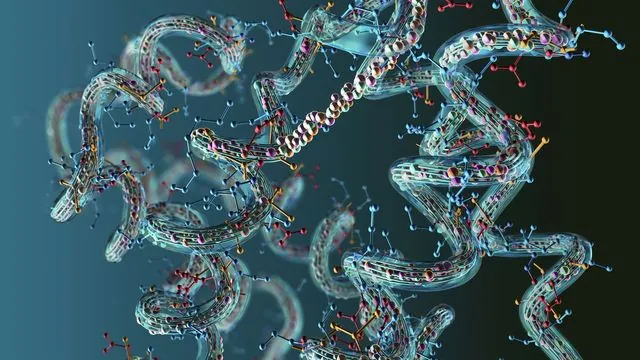
Unveiling the Secrets of P2X Receptors: A Breakthrough in Disease Treatment
2025-09-17
Author: Mei
Unlocking Potential in Disease Treatment
In exciting new research, Oregon Health & Science University scientists have revealed intricate blueprints of P2X receptors, crucial "gate" proteins located on human cell surfaces. Their findings promise to revolutionize treatments for a myriad of diseases, from certain cancers and Alzheimer’s to hearing loss and atherosclerosis.
Meet the P2X Receptors
Led by Dr. Steven E. Mansoor, a prominent figure in cardiovascular medicine, this research focuses on P2X receptors, which respond to ATP—our body's prime energy molecule. When ATP seeps outside cells, often signaling distress or damage, P2X receptors act as alarm signals, igniting inflammatory and sensory responses.
Dr. Mansoor emphasizes the significance, stating, "Extracellular ATP is a universal danger signal. Understanding these receptors at an atomic level is pivotal for creating drugs that can either calm them or precisely regulate their actions."
Mapping the P2X7 Receptor: A Milestone in Inflammation Research
In a groundbreaking study published in Nature Communications, researchers have mapped the human P2X7 receptor, known for its association with inflammatory diseases like cancer and Alzheimer’s. Despite extensive research, effective drugs targeting this receptor have been elusive, largely because previous candidates that excelled in animal trials faltered in human trials.
Following earlier insights from Mansoor's team, they successfully visualized how drugs deactivate the human P2X7 receptor for the first time, unlocking the door to more tailored drug designs. They created a new compound, UB-MBX-46, designed to fit perfectly into the human receptor, enhancing its blocking efficiency.
Oken, a key contributor, expressed hope for future therapies: "Understanding the unique structure of the human P2X7 receptor allows us to engineer drugs that are more likely to succeed in clinical settings."
New Discoveries in Auditory Function: The P2X2 Receptor
Meanwhile, a second study featured in the Proceedings of the National Academy of Sciences explored the P2X2 receptor, primarily found in the cochlea, the organ responsible for hearing. This receptor plays a vital role in hearing mechanisms and adapting to loud sounds. Genetic mutations here have been tied to hearing loss, yet effective drugs targeting it remain non-existent.
Conducted by Franka Westermann and her team, the study utilized cryo-electron microscopy to visualize the P2X2 receptor's 3D structure in both active and inactive states, revealing critical insights into its function and mutation sites.
"We can see how ATP binds and how the receptor alters molecularly, providing important comparisons to P2X7," Westermann noted. Thus, this knowledge paves the way for more specific therapeutic molecules.
Laying the Groundwork for Future Therapies
Collectively, these studies significantly advance our understanding of P2X receptors and their role in various diseases. Dr. Mansoor sums it up as "foundational work" that creates a pathway for developing selective drugs that could tackle an array of human conditions.
The implications are profound, and Mansoor is dedicated to steering his research toward practical applications that can make a real difference in clinical settings.


 Brasil (PT)
Brasil (PT)
 Canada (EN)
Canada (EN)
 Chile (ES)
Chile (ES)
 Česko (CS)
Česko (CS)
 대한민국 (KO)
대한민국 (KO)
 España (ES)
España (ES)
 France (FR)
France (FR)
 Hong Kong (EN)
Hong Kong (EN)
 Italia (IT)
Italia (IT)
 日本 (JA)
日本 (JA)
 Magyarország (HU)
Magyarország (HU)
 Norge (NO)
Norge (NO)
 Polska (PL)
Polska (PL)
 Schweiz (DE)
Schweiz (DE)
 Singapore (EN)
Singapore (EN)
 Sverige (SV)
Sverige (SV)
 Suomi (FI)
Suomi (FI)
 Türkiye (TR)
Türkiye (TR)
 الإمارات العربية المتحدة (AR)
الإمارات العربية المتحدة (AR)